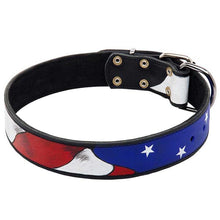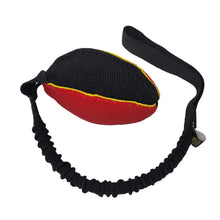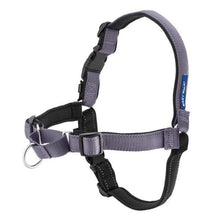Are E-Collars Ethical In Dog Training? Data Results From A New Study On Police K9s

Mankind has trained dogs for thousands of years. In those thousands of years, several methods of dog training have arisen. These methods range from reward-based methods in the form of positive reinforcement, to the use of training aids as aversive stimuli such as electronic shock collars, ultra sonic devices, prong collars, etc. In the form of positive punishment and negative reinforcement. The application of aversive stimuli, especially when dealing with electronic training collars, is a highly controversial issue.
The results of a recent study involving 42 police dog and handler teams indicate that the electronic training collar induces less distress and shows a stronger learning effect in dogs in comparison to a prong collar.
In other words, this means that because the stimulus isn't associated with the handler, the dog tends to be less distressed. Whereas, if a correction is applied using a prong collar, it creates some modicum of conflict between the dog and handler, which increases distress.

I find that interesting because there are people who say that prong collars are abusive. And there are people who use prong collars and highly recommend them, who claim that they would never use an electric collar because electric colors are abusive. But science shows that the electric collar is less distressing for the dog than a prong collar. That doesn't mean that prong collars don't have a place. Especially in younger dogs where leash pressure may be required to teach certain behaviors. Would it be possible to train a dog using nothing but positive rewards? Absolutely, that isn't just possible, it's done every day by positive-reinforcement-only trainers. The issue is that you can train a dog to do something, but it does not mean that they will obey when they find something else more interesting.
The point of Corrections IE punishment is to teach a dog that it must obey the commands that it already knows through the process of positive rewards training. Therefore, and we're talking about my personal opinion here, positive reward is necessary, and the prong collar is necessary because sometimes the least pressure is needed to teach behaviors. The electric collar isn't necessary, but it causes less stress for the dog and can help teach behaviors off leash and at distance more efficiently and with less stress than any other tool.
To me, causing less stress for my dog means that electric collars are indeed necessary. The goal of all dog training should be to teach, which is when you would use positive reward, and to proof behaviors meaning that you teach the dog that it must obey commands that it's been taught. You do those two things while causing the least amount of stress to the dog. You never explicitly have to use rewards in training. You could just put 8-week-old puppies on prong collars then push and pull and correct them, you would end up having a dog that is trained and always obeys. But a dog trained in that manner probably won't like you unless they have hardness of character and don’t take such harsh treatment personally.

Dogs who can take that level of stress and appear to be normal friendly dogs, instead of brow beating cowering shells of a dog, are extremely rare. That is why if an e-collar causes less stress to a dog in training, I view them as necessary tools that should be in every dog trainer’s tool bag. The early methods of electric collar training were harsh yet effective. With modern training techniques using the electric collar, dog trainers use very low levels of stimulation.
I found that oftentimes on such low levels when placing the contacts to my arm, I can't feel the stimulation when I press the button. Yet the dog can feel it, and it's enough for them to stop doing a behavior that I don't want them to do during training. That is one of the best features of the e-collar, that it can be dialed exactly to the lowest level that is necessary to get the results needed.
Also, during this study, a questionnaire was given to the canine officers who participated in it. As the handlers of the test subjects, their working police service dogs, to gain further, more intimate information about dogs’ characteristics, past experiences in training, health etc., to get a clearer picture of the data collected. Furthermore, the body language of the dogs during obedience exercises was filmed and analyzed so that correlations between that dog's individual experiences, body posture and characteristics could be recorded to compare the body posture and direct reactions of the dogs to the training methods used.
The tests were performed on 42 adult police dogs of both genders (33 males and 9 females) and varying ages (3-10 years old) of the breed Belgian Malinois. 22 dogs, which were tested in Muenster, were recruited from different Police Departments in Nordrheinwestfalen, whereas another 20 dogs that participated in the study belonged to the Hannover Police Department.

During the study, physical stress cues were tallied and compared between the prong collar and electric collar and showed significant differences in stress cues when e-collars were used vs. prong collars. The results showed that the body reactions to stress when using a prong collar were more distressful for dogs when compared with the electric collar. This makes a solid argument to draw conclusions that e-collars are more effective than prong collars as a tool of correction in that they result in less conflict and less stress from a dog's perspective.
See a link to the study below.
We've tried to summarize and condense a 194-page study in a short article, so if you're a fan of training dogs, we urge you to read the study in its entirety. As always, we hope you found this informative and educational. We try to dispel as many myths as possible and help people train their dogs while helping dogs by giving their owners information that will help bring about the least amount of stress and conflict during training. We will also be providing a link to our shop's page so you can browse our selection of e-collars. E Collar Collection.
If you are unaware of this study, it's safe to assume a lot of other dog owners are as well, so please hit like and share. Thank you.
You might also like: How to Pick a Dog Trainer


























